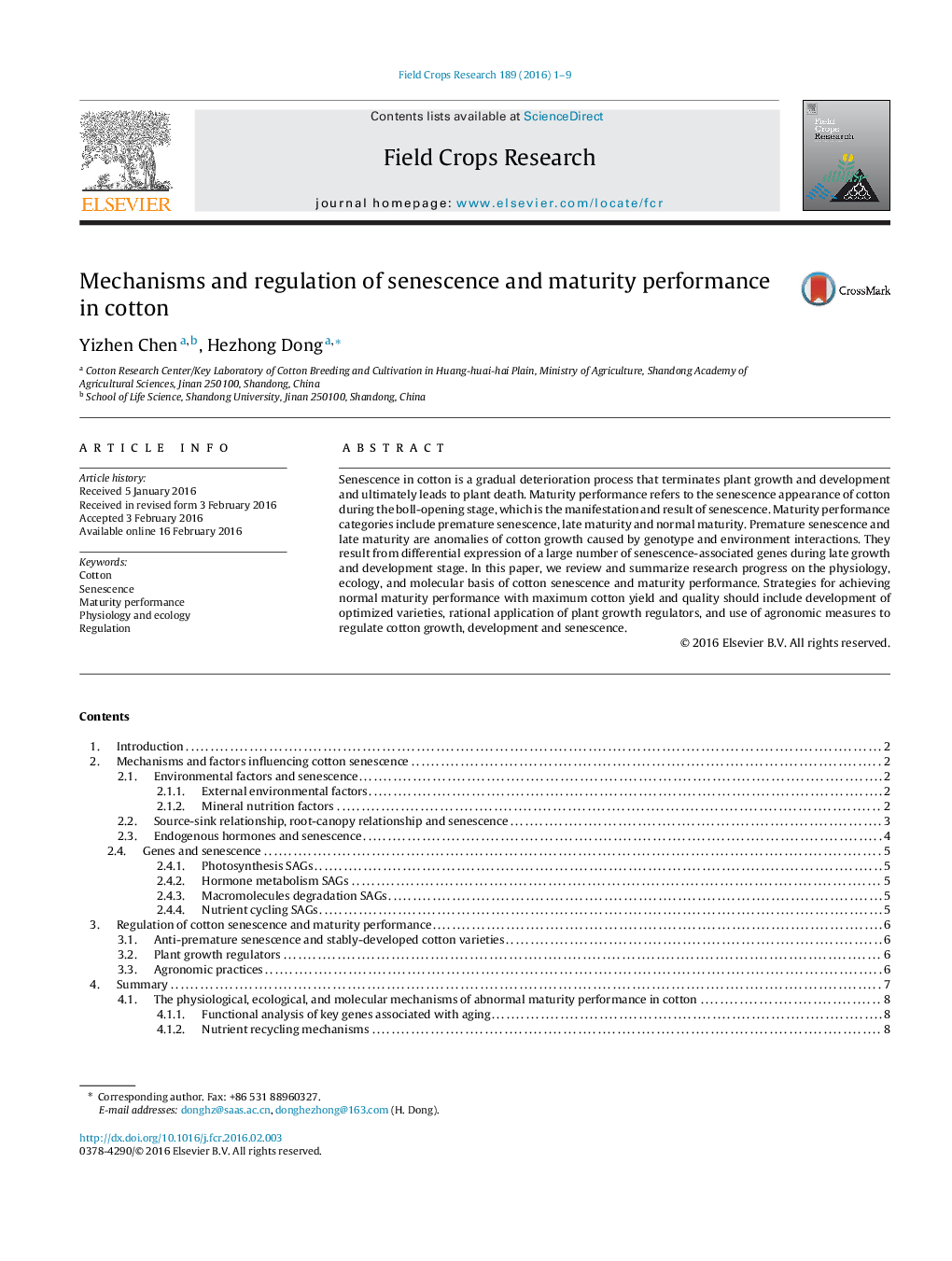| Article ID | Journal | Published Year | Pages | File Type |
|---|---|---|---|---|
| 6374616 | Field Crops Research | 2016 | 9 Pages |
â¢Research progress on cotton senescence and maturity performance is reviewed.â¢Senescence and maturity in cotton are complex processes regulated by both internal and external factors.â¢Maturity performance results from differential expression of a number of senescence-associated genes.â¢Normal maturity of cotton can only be achieved through effective regulation of senescence.
Senescence in cotton is a gradual deterioration process that terminates plant growth and development and ultimately leads to plant death. Maturity performance refers to the senescence appearance of cotton during the boll-opening stage, which is the manifestation and result of senescence. Maturity performance categories include premature senescence, late maturity and normal maturity. Premature senescence and late maturity are anomalies of cotton growth caused by genotype and environment interactions. They result from differential expression of a large number of senescence-associated genes during late growth and development stage. In this paper, we review and summarize research progress on the physiology, ecology, and molecular basis of cotton senescence and maturity performance. Strategies for achieving normal maturity performance with maximum cotton yield and quality should include development of optimized varieties, rational application of plant growth regulators, and use of agronomic measures to regulate cotton growth, development and senescence.
